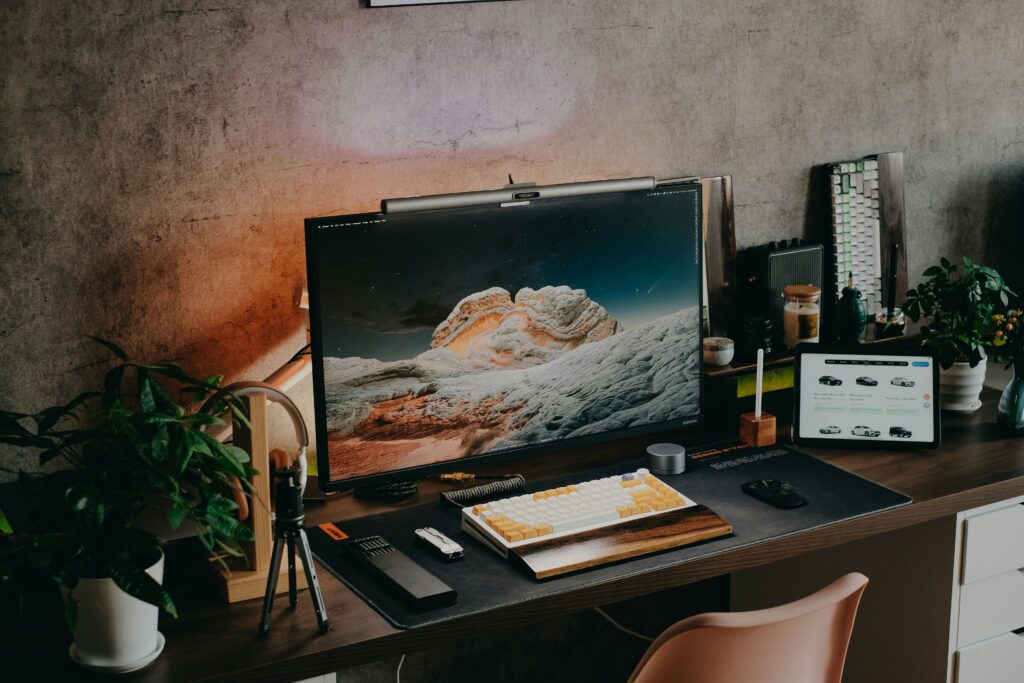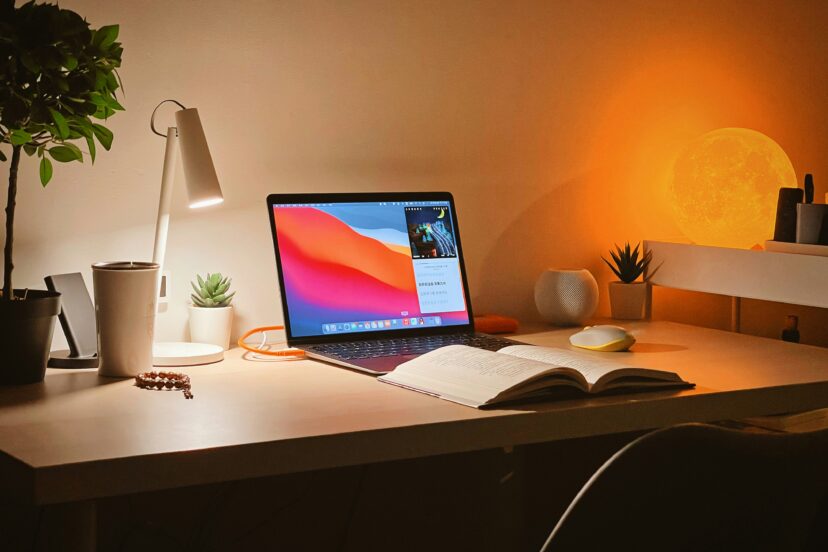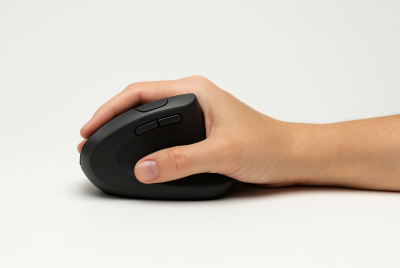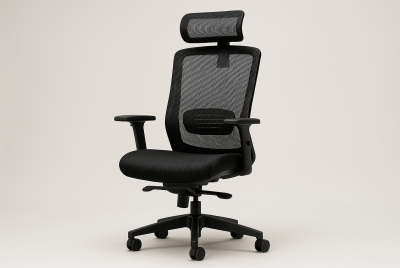10 Ergonomic Essentials For Students
We may earn a commission for purchases made using our links. Please see our disclosure to learn more.
Studying should exhaust your mind, not your back, neck, or legs! Yet many students say they feel stiff and sore after hours of studying. If you’ve been there, you’re certainly not alone. But here’s the good news: with a few easy ergonomic upgrades, you can completely transform the way you study. Let’s explore the 10 Ergonomic Essentials For Students that will keep you comfortable, focused, and ready to tackle anything.
Why Ergonomics Matters for Students
Have you ever finished a study marathon feeling like a twisted pretzel? Yep, that’s your body begging for some ergonomic love. Ergonomics is all about setting up your space so it works with you, not against you. When you do it right, you’ll study longer, feel better, and probably even ace that next exam.
Science backs this up too! A study on ergonomic education found that teaching people how to set up their workspaces properly significantly reduced body aches and pains. Another study on student furniture showed that comfy, well-designed desks and chairs made a big difference in reducing strain during long study sessions. Bottom line: comfort equals better focus.
1. Ergonomic Desk: Your Command Center
Picture yourself as the captain of a spaceship. Now, would a cramped little table do the trick? Definitely not! A good ergonomic desk lets you keep your elbows at a comfy 90-degree angle and your screen at eye level. Even better if it adjusts so you can stand sometimes too.
Quick Tip: Make sure your desk has plenty of space — you don’t want to feel like you’re studying in a shoebox!
ErGear Height Adjustable Electric Standing Desk
This electric standing desk makes it easy to switch from sitting to standing with just a push of a button. Built with a sturdy frame and smooth motor, it’s perfect for staying comfy and focused all day.
2. Adjustable Chair: Your Throne of Comfort
Your chair is your throne during study sessions, so choose one that treats you like royalty. You want something that hugs your lower back, lets your feet sit flat on the ground, and gives you a little recline when you need it. Adjustable everything — height, armrests, lumbar support — is a huge plus.
Fun Fact: Sitting badly for hours is like bending a paperclip over and over… it eventually snaps! Your spine deserves better.

3. Laptop Stand: Elevate Your Success
Laptops are great — until you realize you’re always looking down and wrecking your neck. A laptop stand lifts your screen to eye level, helping you sit taller and feel stronger. It’s a small ergonomic essentials tweak that makes a giant difference.
Pro Tip: Pair it with a separate keyboard and mouse to really level up your setup.
4. External Keyboard and Mouse: Your Secret Weapons
Typing on a tiny laptop keyboard is like running a marathon in flip-flops. Awkward, uncomfortable, and a recipe for disaster. An external keyboard and mouse are ergonomic essentials that give your hands and wrists the space they need to move naturally, keeping your posture relaxed.
If you really want to level up your setup, consider using an ergonomic keyboard tray. It lets you position your keyboard and mouse at just the right height, keeping your wrists straight and helping you stay comfortable during long study sessions.
Little Reminder: Keep your wrists straight and floaty — no weird angles or strained fingers!
5. Footrest: Don’t Let Your Feet Dangle
Dangling feet aren’t just awkward — they’re terrible for your posture. A footrest keeps your knees at that golden 90-degree angle, helping your blood flow better and taking pressure off your back. It’s a simple ergonomic essentials upgrade with a big impact.
Fun Analogy: Think of a footrest like a cozy little hammock… but just for your legs!
6. Monitor Light: Bright Ideas for Your Eyes
Ever felt like your eyes were doing squats while you studied? Bad lighting is usually the culprit. A good monitor light or adjustable desk lamp eases the strain, reduces glare, and makes your study corner feel warm and inviting.
Quick Hack: Choose a soft, adjustable light that feels like sunshine — your eyes will seriously thank you.

7. Ergonomic Backpack: Carry the Load Right
Carrying a heavy backpack should not feel like scaling a mountain! An ergonomic backpack spreads the load evenly, with padded straps and even a chest clip to save your shoulders and back. It makes a world of difference walking around campus (or even just your house).
Imagine This: A regular backpack is like lugging around a sack of rocks. An ergonomic one? More like carrying a fluffy cloud.
8. Standing Desk Converter: Switch It Up
Feeling stuck in your chair all day? A standing desk converter lets you mix things up without committing to a full new desk. It lifts your workspace up to standing height, helping your blood circulate better and your mind stay fresh.
Pro Tip: Switch between sitting and standing every 30–60 minutes. Your body loves the change of pace!
9. Blue Light Glasses: Shields for Your Eyes
Screens blast your eyes with blue light all day long, and it’s exhausting. Blue light glasses are like little superheroes for your eyes, filtering out the worst of it and helping you avoid headaches and sleep problems.
Fun Comparison: Think of them as your secret weapon — like sunglasses, but for the digital world.
10. Seat Cushion: The Unsung Hero
Even if your chair isn’t perfect, a good seat cushion can save the day. Memory foam or gel cushions take the pressure off your tailbone and hips, making even a hard chair feel supportive and cozy.
Quick Thought: A cushion is like a marshmallow for your seat — soft, supportive, and ridiculously comfortable.

How to Set Up Your Ergonomic Study Space
Got all the essentials? Sweet! Now it’s time to set things up the right way:
- Make sure your screen is at eye level
- Keep your elbows bent at 90 degrees
- Let your feet rest flat on the ground (or on a footrest)
- Keep your knees bent at a 90-degree angle too
- Make sure your wrists stay straight, not bent up or down
Think of your setup like building a spaceship cockpit — everything should be easy to reach, and nothing should feel awkward.
Common Mistakes Students Make (And How to Avoid Them)
Even with all the right gear, little mistakes can sneak in. Here’s what to watch out for:
- Leaning forward: Trust your chair’s backrest. It’s there for a reason!
- Skipping breaks: Stand up and stretch every half hour or so.
- Bad lighting: Always study in a bright, comfortable space.
- Screen too low: No more turtle neck syndrome — raise that screen!
Tiny Ergonomic Tweaks That Make a Huge Difference
Small changes can add up fast! Try these mini-tweaks:
- Adjust your chair height a little for better posture
- Tilt your keyboard slightly downward
- Roll up a towel for instant lower back support
- Hold your phone at eye level — no neck craning
Each tweak is like laying another brick in your “comfortable studying” foundation.
Investing in Ergonomics: It’s a Game-Changer
Ergonomics isn’t just about comfort — it’s an investment in your brainpower. Every time you study in a way that protects your body, you’re setting yourself up for success. You’ll have more energy, better focus, and way fewer “Ugh, my back hurts” moments.
When to Upgrade Your Gear
If your setup feels like it came straight out of a medieval dungeon, it’s probably time for an upgrade. Listen to your body — soreness, stiffness, and fatigue are all red flags. The right gear doesn’t just make studying easier; it makes it healthier.
Ergonomics on a Student Budget
Worried you’ll have to break the bank? Don’t stress! Start small. A laptop stand or a basic seat cushion can work wonders without costing a fortune. Tackle the areas that cause you the most discomfort first, and build your dream setup with the right ergonomic essentials over time.
Friendly Advice: Good posture is an investment that pays off way more than your daily coffee habit!
Final Thoughts
Your body is working overtime to help you succeed so please, don’t leave it hanging! With the right ergonomic essentials, you can make studying a whole lot easier (and way less painful). Start small, adjust as you go, and remember: a few simple tweaks now can lead to big wins later. Future you and your back will be forever grateful.
FAQs
1. Can ergonomics really improve my studying efficiency?
Definitely! Better posture means better blood flow, sharper focus, and longer, more productive study sessions.
2. How often should I take breaks while studying?
Aim for every 30 to 45 minutes. Even a quick stand-and-stretch can reboot your energy.
3. Is an ergonomic chair really worth it for students?
A hundred times yes! A good chair can prevent back pain and make long hours feel so much easier.
4. What’s the cheapest ergonomic upgrade I can make?
Use an extra keyboard or laptop stand first. They’re affordable and make a big difference fast.
5. How do I know if my setup is right for me?
If you feel comfortable, relaxed, and pain-free after studying, you’re winning. If not, tweak your setup until it feels just right.





